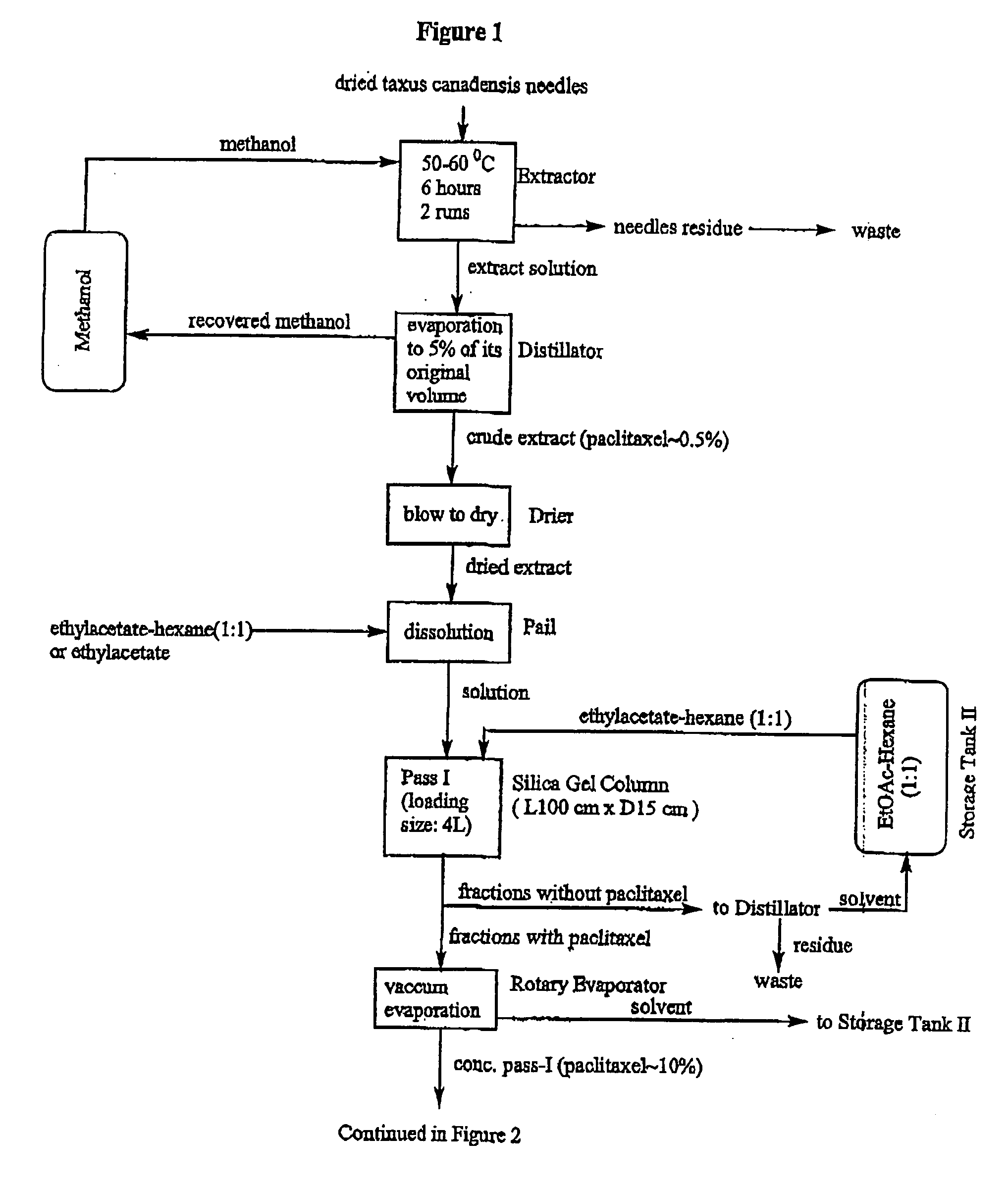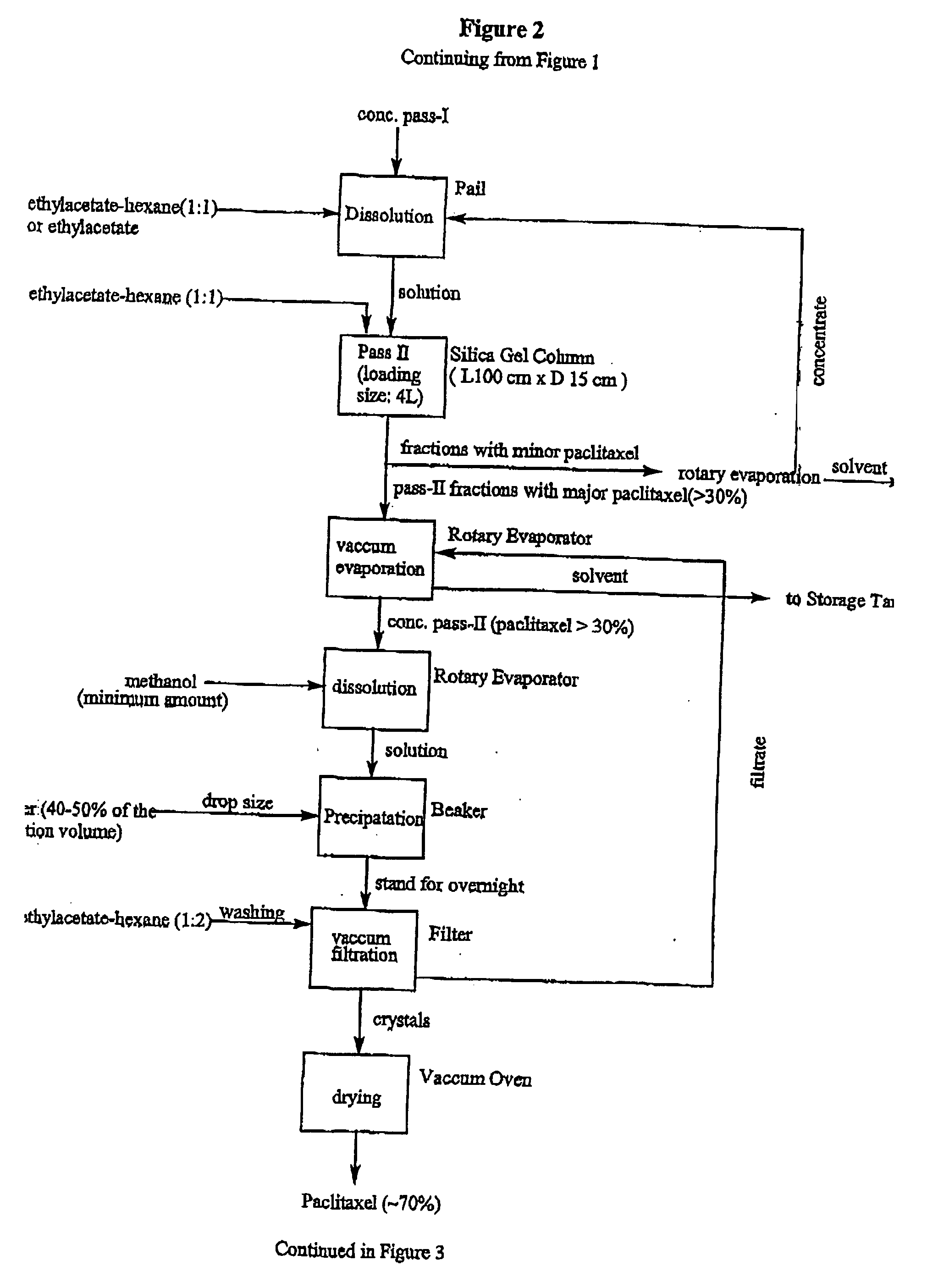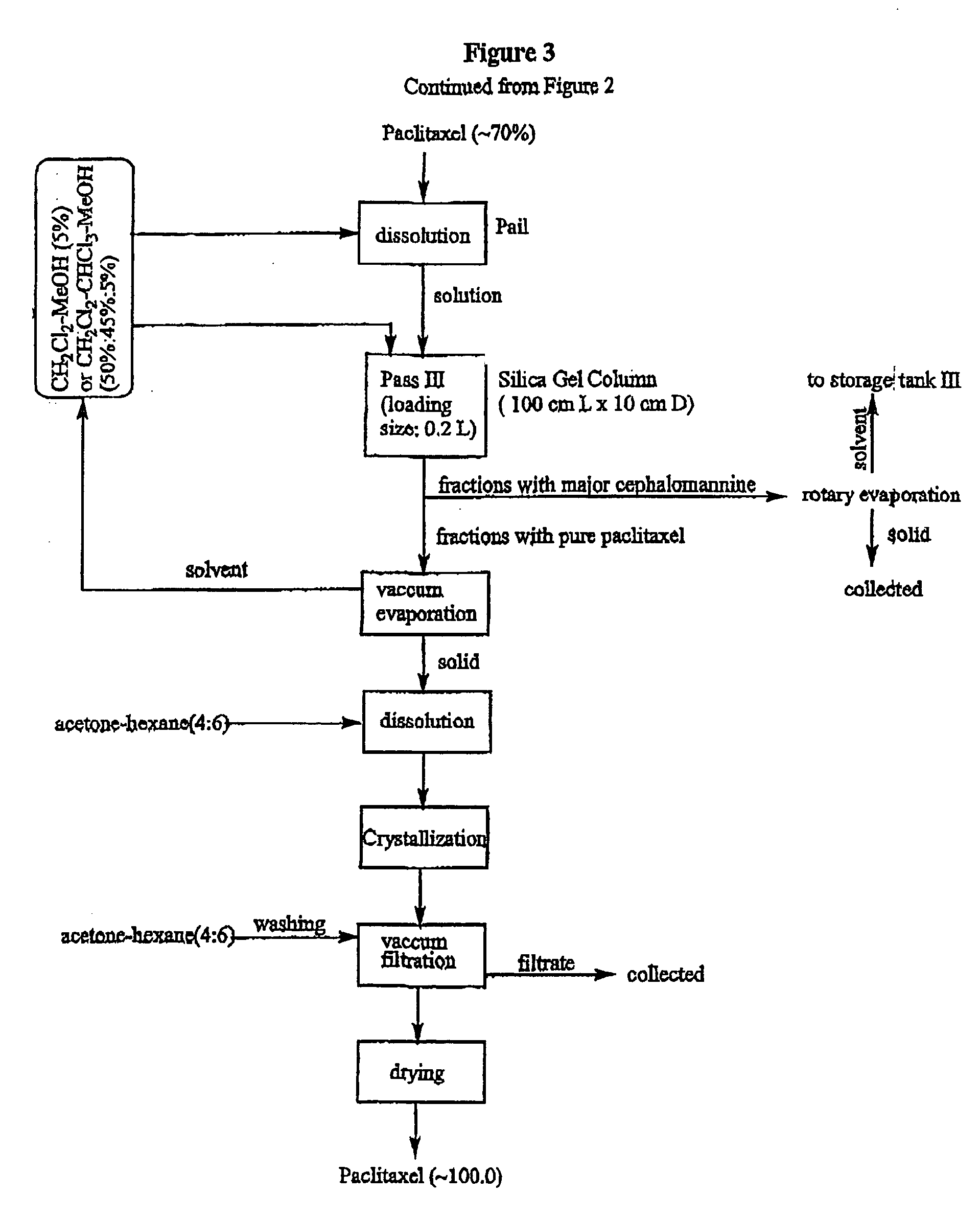Isolation of taxanes
a technology of taxanes and isotopes, applied in the field of isotopes of taxanes, can solve the problems of low capacity and high cost, essentially impractical for large-scale commercial production, and high production costs
- Summary
- Abstract
- Description
- Claims
- Application Information
AI Technical Summary
Benefits of technology
Problems solved by technology
Method used
Image
Examples
Embodiment Construction
[0032] All chemicals were used as received from the manufacturer or supplier, and analyzed before use. Glass chromatographic columns and silica gel were obtained from Fareast Pharmaceutical Equipments Inc. China. Industrial solvents were obtained from Stanchen, Canada. HPLC reference chemicals such as paclitaxel, cephalomannine, and 9-dihydro-13-acetyl-baccatin III were obtained from Hauser, USA. Fluorescent silica gel TLC plates were obtained from Waters, USA. Dionex 500 HPLC system was used for analyzing the components in the process.
[0033] A crud extract (0.5 kg) obtained from needles of Taxus canadensis was dissolved in 4 L of ethylacetate. The solution then was loaded on an industrial glass chromatographic column (15 cm.times.100 cm) which was already packed with silica gel powder (1.times.250 mesh) to 70% of the column height. The column was eluted with ethylacetate-hexane (1:1 v / v) under a pressure of 25.+-.5 psi. The flow rate was controlled to be about 100.about.150 mL / min....
PUM
| Property | Measurement | Unit |
|---|---|---|
| flow rate | aaaaa | aaaaa |
| temperature | aaaaa | aaaaa |
| flow rate | aaaaa | aaaaa |
Abstract
Description
Claims
Application Information
 Login to View More
Login to View More - R&D
- Intellectual Property
- Life Sciences
- Materials
- Tech Scout
- Unparalleled Data Quality
- Higher Quality Content
- 60% Fewer Hallucinations
Browse by: Latest US Patents, China's latest patents, Technical Efficacy Thesaurus, Application Domain, Technology Topic, Popular Technical Reports.
© 2025 PatSnap. All rights reserved.Legal|Privacy policy|Modern Slavery Act Transparency Statement|Sitemap|About US| Contact US: help@patsnap.com



